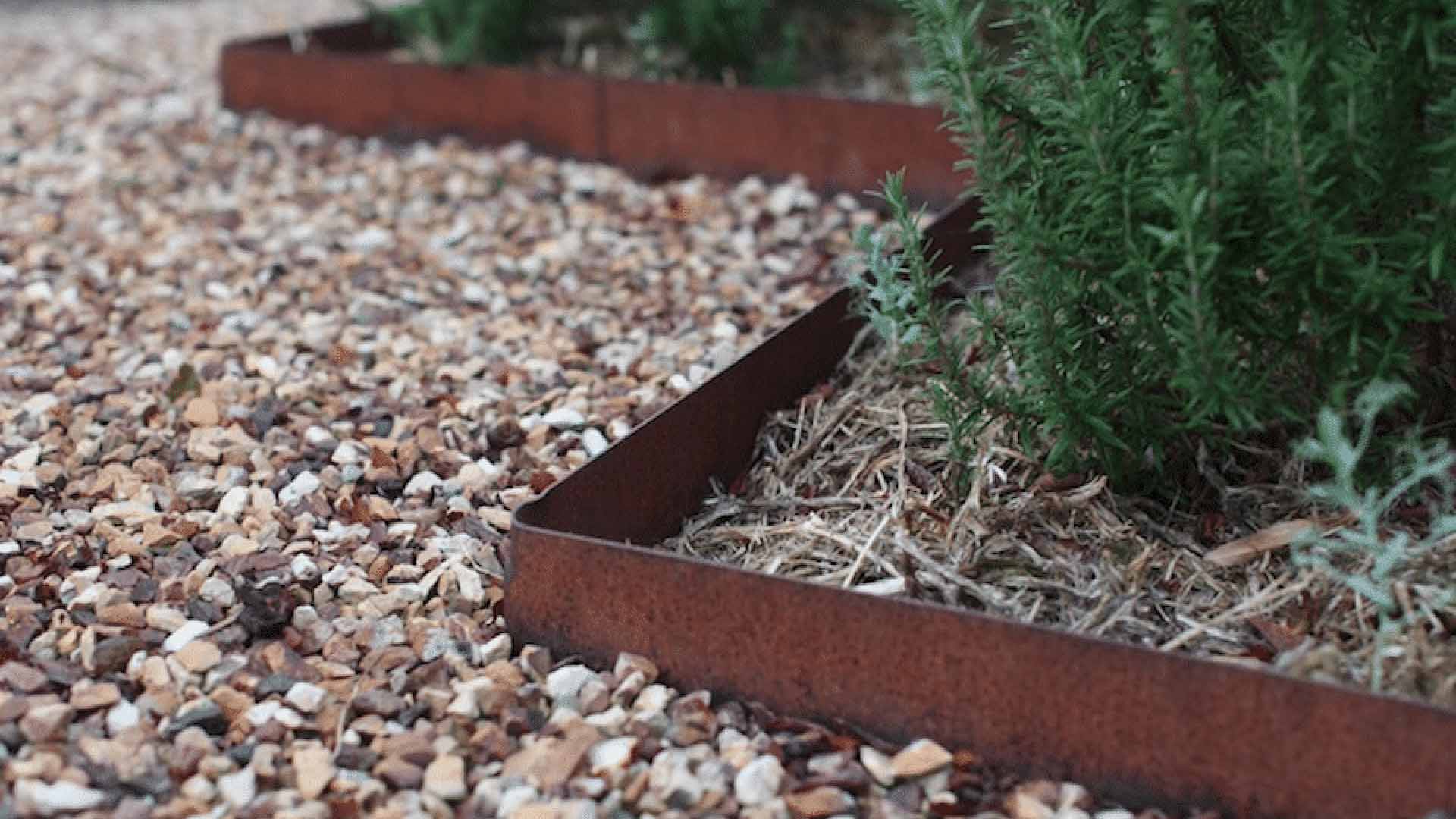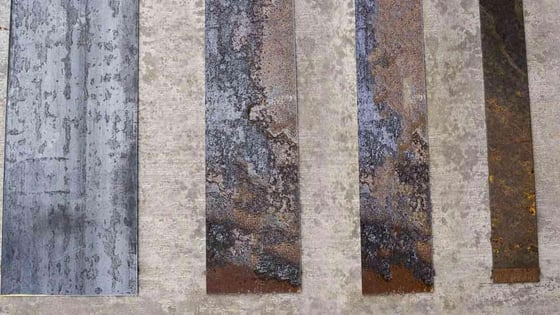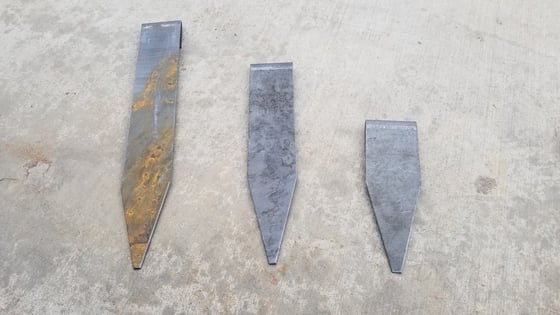Metal Landscape Edging: DIY Lawn Edging Guide To Boost Curb Appeal
Ready for an easy way to upgrade your outdoor area? Landscape edging is a quick and relatively inexpensive solution to boosting your home’s curb appeal. Edging gives definition to a yard by accentuating each area with borders that provide beautiful clean lines. Finding the best landscape edging for your property can be overwhelming, as there are many different materials for edging to choose from.
Metal is one of the most popular landscape edging materials as it provides a rustic appearance that’s easy to install.
At Western States Metal Roofing, we have specialized in metal manufacturing for over 20 years. In addition to roofing and siding panels, we also offer landscape edging and stakes in Corten steel, also known as weathering steel.
We often receive questions about metal landscape edging, so we have compiled all the information you need to know in this article including:
- Metal Thickness (Gauge Size)
- Strip Size
- What Size And Amount Of Stakes To Use
- How To Install Strips
- Using As A Tree Ring/ Radius
- Thicknesses And Sizes Available
Metal Lawn Edging Thickness
The thickness, or gauge size, you should use for your landscape edging depends on what purpose you want the edging to serve. Gauge sizes for edging vary depending on the manufacturer, but generally, you will find metal edging offered in 11-gauge up to 18-gauge metal.
Our two sizes for metal landscape edging are 11-gauge and 14-gauge. When it comes to gauge, as the number gets higher, the product gets thinner. 11-gauge is a thicker metal than 14-gauge.
When To Use A Lighter Gauge Of Landscape Edging
If your metal landscape edging is only for appearance and is not for functionality, such as holding back rocks or soil, then you can use 14-gauge metal edging. A lighter material is fine to use as the edging’s sole purpose, in this case, is to be decorative.
When To Use A Heavier Gauge Of Landscape Edging
If your edging is going to be used for more than just decoration, such as holding back landscaping materials like rocks or soil, then you should use 11-gauge edging. The 11 -gauge is thicker and heavier than 14-gauge. The increased sturdiness of 11-gauge is needed to help keep landscaping materials securely in place.
Lawn Edging Strip Size
The length and width of the strips vary depending on the manufacturer. Our strips come in four widths: 4-inch, 6-inch, 8-inch, and 12-inch. All of our strips are 10-feet in length. Similar to gauge, the strip size you use depends on why you are using landscape edging.
When To Use 4-inch And 6-inch Strip Landscape Edging
If the landscape edging is for decorative purposes only, then it is fine to use 4-inch or 6-inch strips where the strips don’t need to be buried in the ground. You can use a wider strip as well, it just depends on personal preference and the look you want to achieve.
When To Use 8-inch Or 12-inch Strip Landscape Edging
If your landscape edging is meant to serve a purpose like holding rocks or soil in place, then 8 or 12-inch strips are needed. These larger widths will give a good depth to bury the edging inside the ground that gives the sturdiness needed to hold the materials back.
Edging Stake Size And Quantity To Use
Stakes keep the edging in place. You should use 4 stakes per strip, with one being located at the lap. Stakes should run 4 inches longer than the face width of the edging for stability.
Strip Installation
-
- Determine where you want your edging to go. Measure between your desired starting and stopping points to determine how much edging you will need.
- Dig a trench. How deep the trench is will depend on which size material you use.
- Push each strip into the trench. Place stakes far enough in that the edging stands upright. The ends of each strip should overlap with a stake used to keep them in place.
- Use a hammer to secure the stakes into the ground. Make sure the tops of the stakes are in line with the edging.
- Cutting the landscape edging can be done with a grinder or a saw that has the correct blade for cutting steel.
Landscape Edging Sizes
Our landscape edging comes in 11-gauge and 14-gauge. However, contractors are usually able to accommodate custom sizes if your project requires a different gauge. They’ll cut them from steel plates and can make any size and gauge that is needed. The price will vary based on thickness and length.
Stakes and Corners
Manufacturers that sell edging generally also sell stakes. The sizes of the stakes will vary depending on the manufacturer. Some manufacturers will also sell corners, a piece that connects two other edging pieces to create corners in your designs.
We offer stakes in 4-inch, 6-inch, 8-inch, and 12-inch face coverage. We also carry 12”x12” corners which can be bent to any angle needed.
Corner Conditions For Landscape Edging
Corners for landscape edging are available in a size of 12”x12”. The corners can be bent to whatever degree is required. Most corners are either 45 degrees or 90 degrees.
Corners can also be an alternative to a tree ring as you can create a box around the tree with corners.
Tree Ring/Radius
There are some different ways you can use metal edging. Depending on the size and gauge, the edging can also be used for a tree ring or radius. You will want to use 14-gauge as it provides more flexibility. We recommend a minimum of a 44-inch diameter. 11-gauge will be harder to use for tree rings as it is a sturdier material that’s more difficult to bend.
Enhance Your Yard With Metal Landscape Edging
At Western States Metal Roofing, we offer many products besides metal panels to enhance the aesthetics of your home, including landscape edging in Corten steel.
Our edging comes in a heavier gauge steel than the metal edging that you will find at a home improvement store such as Home Depot or Lowes. Our products are strong, long-lasting, and durable. While the corten does not arrive pre-rusted, the edging will rust naturally once exposed to the weather.
Learn More About Metal Landscape Edging
Discover the best types of landscape edging by reading: Best Lawn Edging: DIY Landscape Ideas And Options For 2021







